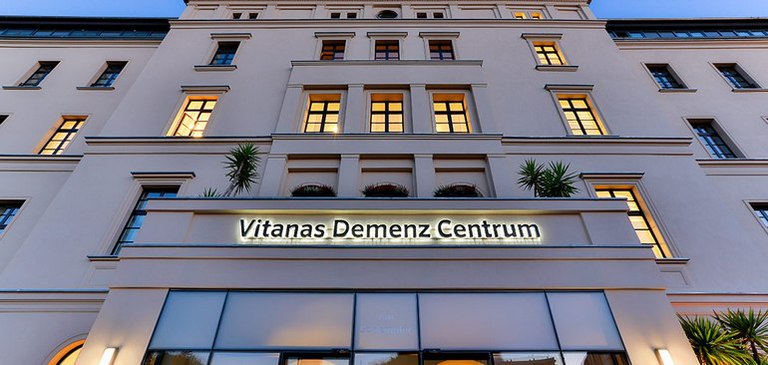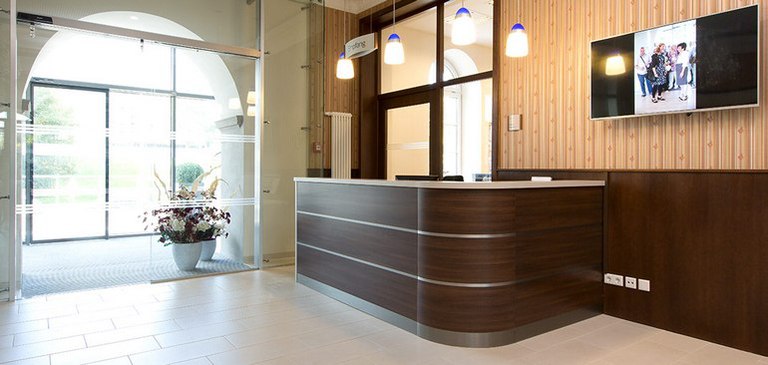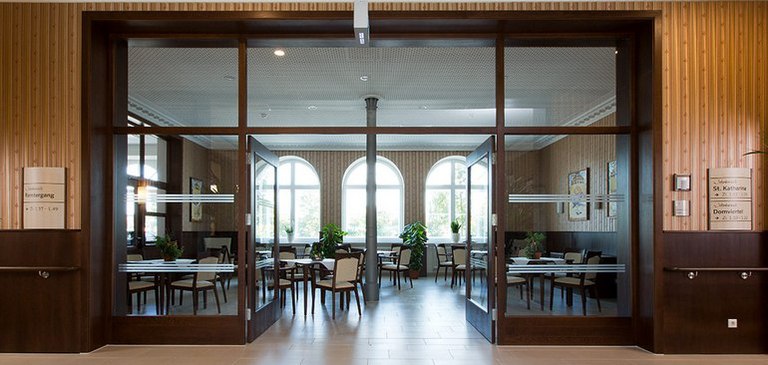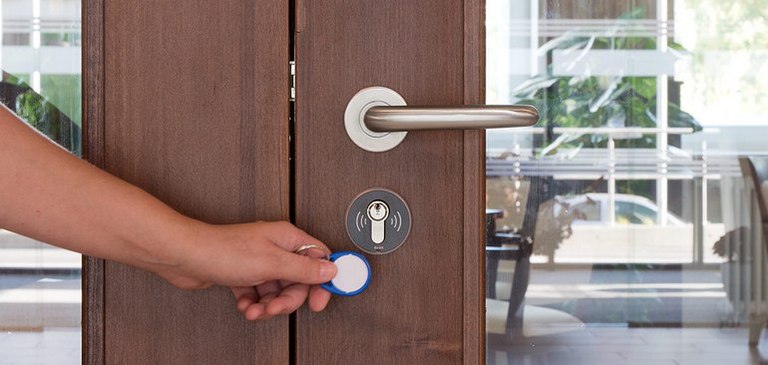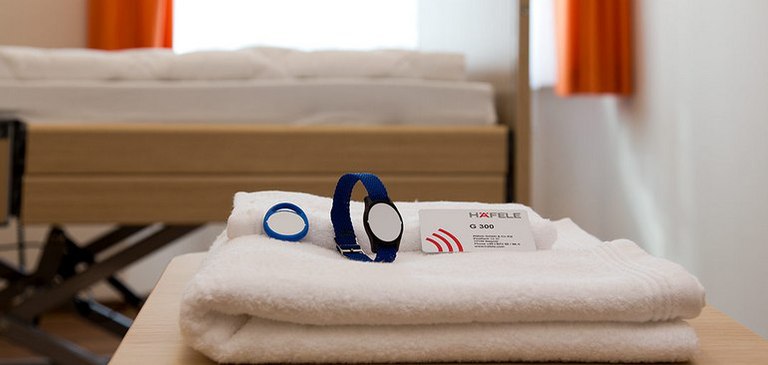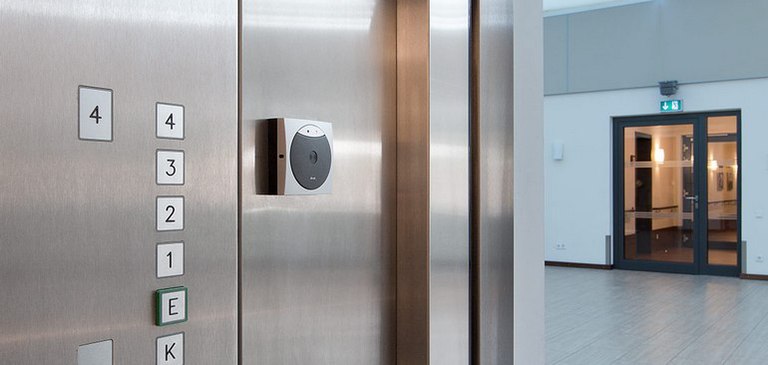Vitanas Dementia Centrum: Innovative locking technology establishes orientation
Innovations for individual architectural solutions
Häfele, the internationally leading provider for hardware technology and electronic locking systems, gives the planners and decision makers with its innovative products the important instruments at hand to implement the ambitious goals to the best. For the modification of the former head office of the state railway to the “Vitanas dementia center at the Schleinufer” in Magdeburg Häfele could make a valuable contribution to the success of the project with their electronic locking system Dialock and with Alasept, the antibacterial surface for construction and furniture fittings. The office Kossel, Simon and partner is responsible for the architecture, planning and coordination of the revitalization.
With the listed building at the promenade at the bank of the river Elbe the Vitanas group is now operating already the second center for the elderly in Magdeburg. Unique are the individual living areas in which different, advanced dementia concepts are used. Each resident suffering from dementia is offered the right residential concept and by that helped individually. Altogether there are six different concepts of housing for 127 people provided in the house.
All clients are looked after specifically and based on their personal stage of disease. On the fourth floor there is a so called “market place”, a light flooded 170 square meter room with a convertible roof. Facilities such as a “Pub”, a hairdresser and a dentist make the room a meeting place for all residents and staff as well as family members or visitors from the outside.
“In principle we are an open house” says the clinical psychologist, gerontologist and director of the department of dementia illness at Vitanas GmbH & Co. KGaA, Claudia Zemlin. “We make a point of giving the residents as much freedom as possible and providing them as much security as necessary. Patients of dementia should remain citizens and participate in life, also outside of the institution. Of course that demands special requirements in the closing technology of a house. But for dementia patients there is not only the one suitable solution in terms of door locking systems: Some residents are not only cognitively but also physically still very much able to use keys, others need alternatives. Therefore we need a very flexible and sustainable system.
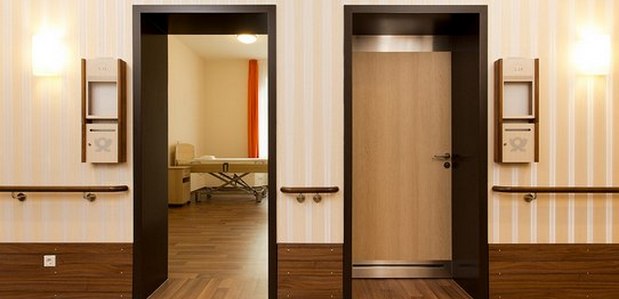
Six different types of housing for 127 people.
Variable closing comfort
Häfele’s electronic locking system “Dialock” offers exactly that required flexibility from the main entrance to the private apartment door of every resident. A combination of mechanical and electronic locking systems provides not only access control but also avoids the high cost of lost keys. According to the memory-oriented approach that is practiced in the house the cylinders were equipped deliberately visible so the residents can recognize and use doors and locks as such. The use of profile cylinders was forgone due to the limited motor skills of some residents. The doors get opened and locked contact-free by passive transponder technology: A microchip with an antenna sits on the dialock key and communicates wirelessly with the Häfele door terminals DT400 and DT600 as well as the wall terminals WT100. It does not need its own power supply because it draws its power for communication from the electric field of the terminals. Thus, the system is cheap and reliable. Emergency openings work with a mechanical key. In addition it is possible to log closing and opening operations to increase the safety of the residents thereby.
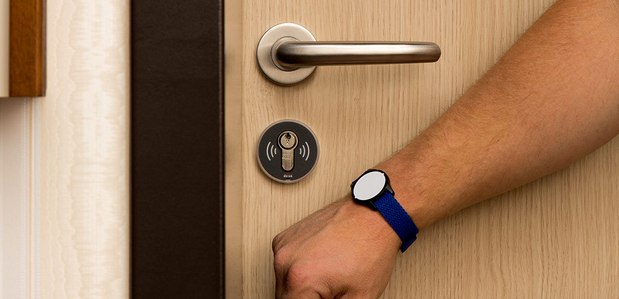
Dialock electronic locking system provides required flexibility.
Hygienically active handles with Alasept
Multi-drug resistant pathogens present a completely different danger that is especially feared in retirement and nursing homes and becomes a problem very often. Joint living holds an additional risk factor here. Häfele’s solution for hygiene-sensitive areas is called Alasept: The innovative surface is a patented coating process that is highly effective against bacteria and viruses. It was also used to refine the door handles in the dementia center in Magedeburg in order to protect its residents against germs.
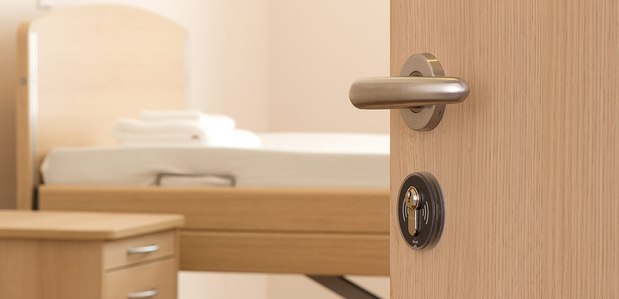
Hygienically active handles with Alasept

